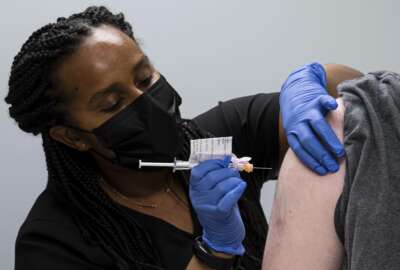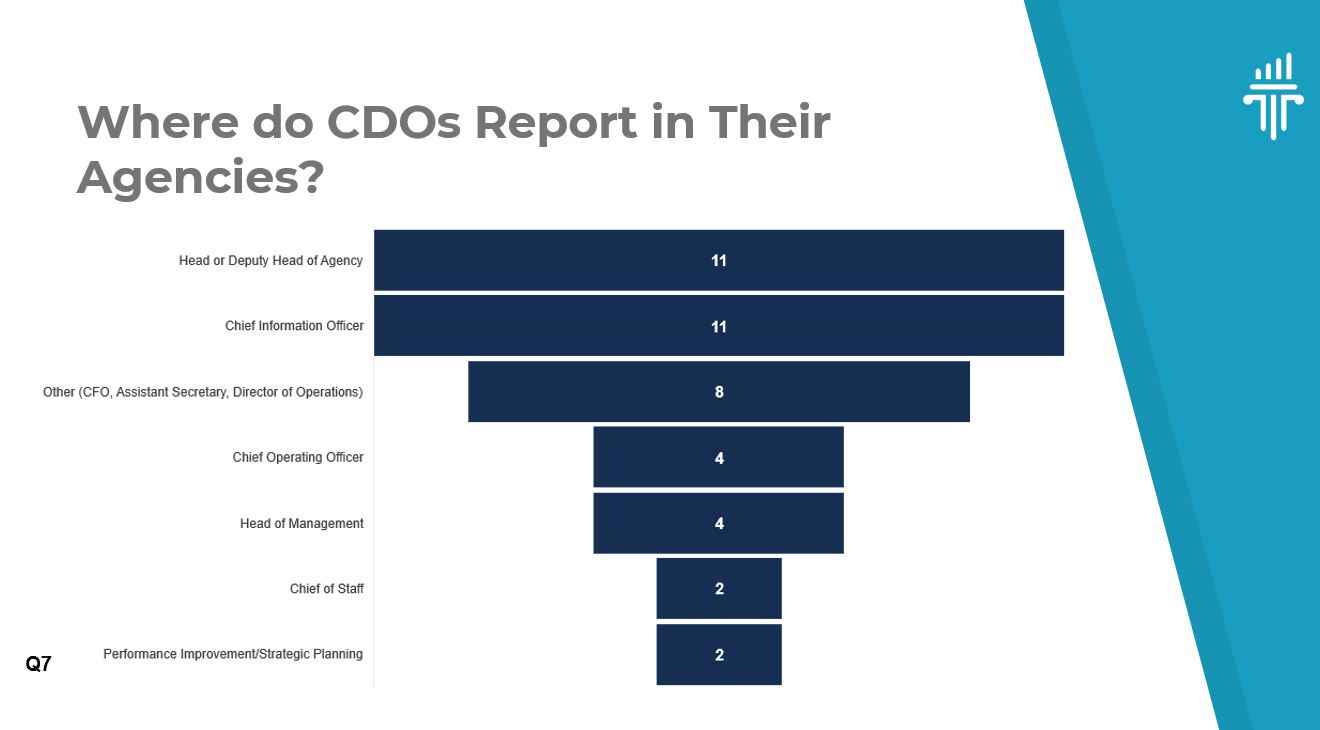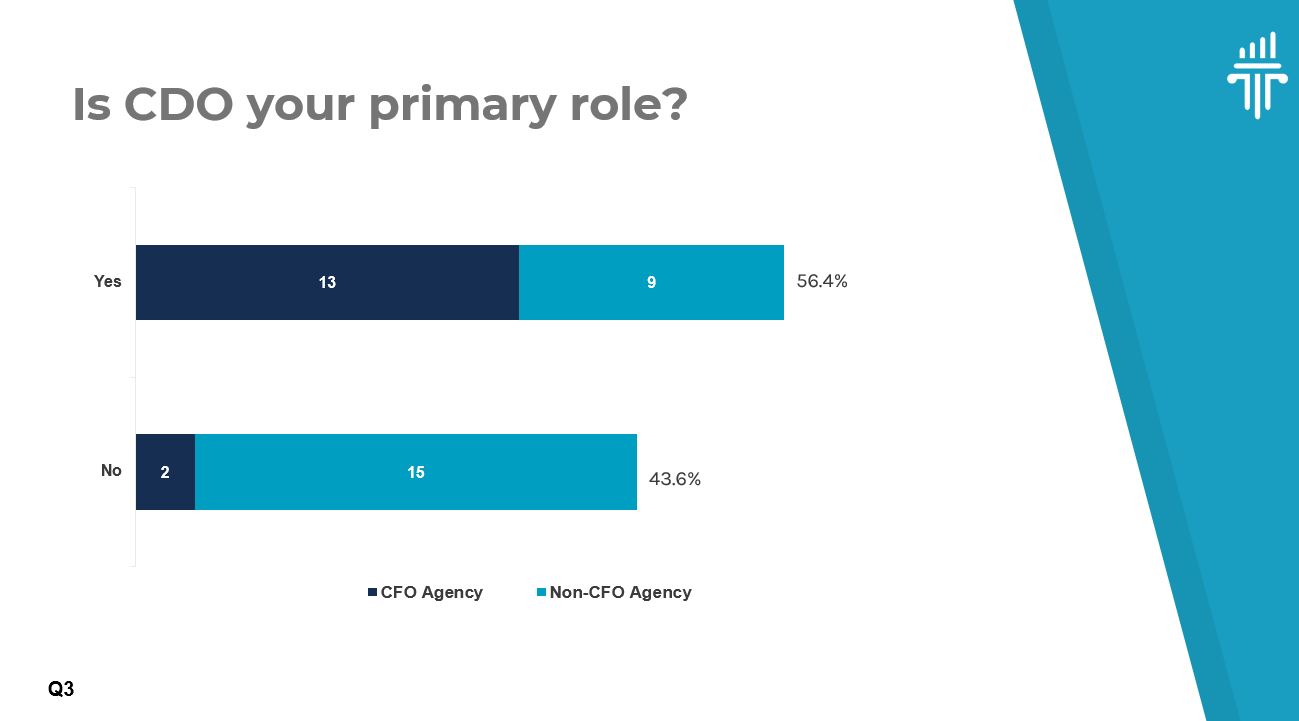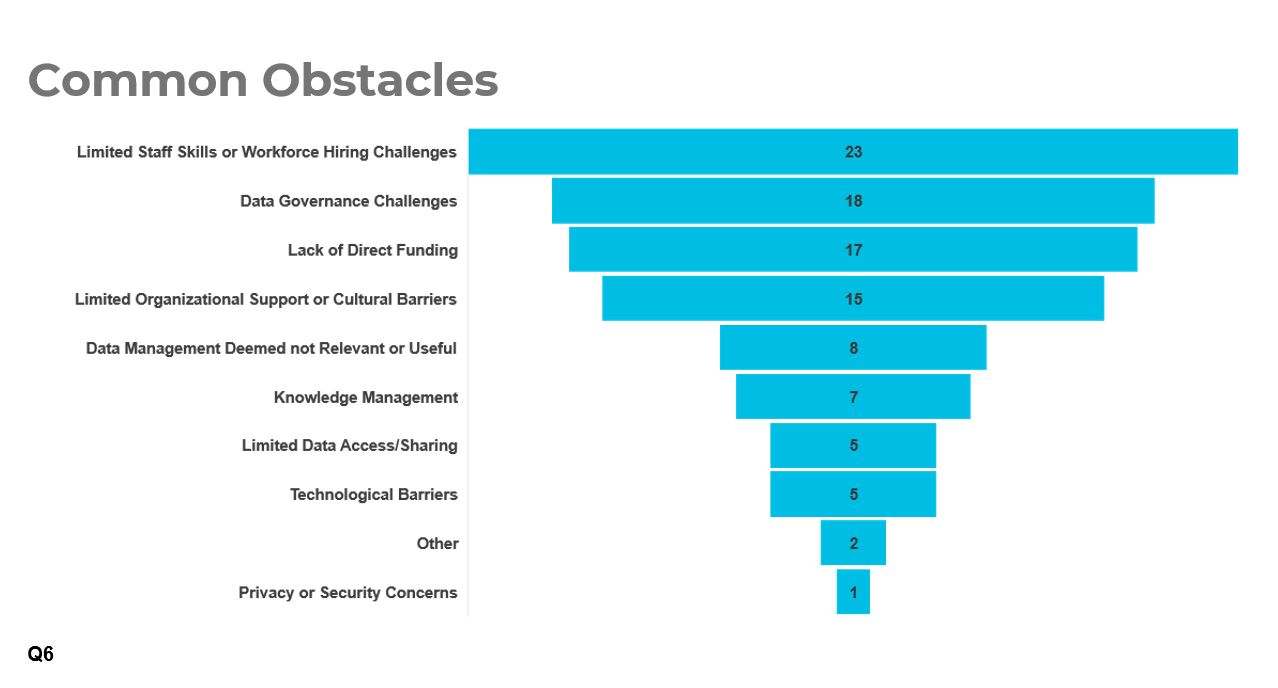
Who is a CDO’s boss? Survey finds mixed role in agency hierarchy
The Chief Data Officers Council is getting feedback from agency CDOs on the niche they’re carving out in their agencies’ org chart and how they’re handling...
Best listening experience is on Chrome, Firefox or Safari. Subscribe to Federal Drive’s daily audio interviews on Apple Podcasts or PodcastOne.
The Chief Data Officers Council is getting feedback from agency CDOs on the niche they’re carving out in their agencies’ org chart and how they’re handling their work.
In a survey of 40 agency CDOs, more than a quarter said they report directly to the head of their agency, while another quarter of respondents said they report to their agency’s chief information officer.
The CDO survey also found most agency data shops spend the majority of their time focused on data governance, policy and strategy. The survey also found many CDOs are spending a considerable amount of time on developing data skills and “data evangelism” at their agencies.
The reporting structure for agency chief data officers draws some parallels to the growing prominence of chief information officers within the agency hierarchy, though in no small part from congressional scrutiny.
The Federal IT Acquisition Reform Act (FITARA) assigns agencies a letter grade based in part on whether their CIO reports directly to the head of the agency. After 11 iterations of the FITARA scorecard, about a third of all agency CIOs still do not report to the secretary or deputy secretary of their agency.

But CDOs, a new addition for many agencies, don’t have a mandate from Congress to have a direct line to the agency’s top brass. The CDO Council, with 80 interagency members, is also structured differently than the CIO Council and its 24 members.
The CDO Council, meanwhile, isn’t pushing for any “prescriptive” measures about where its members fall in the agency hierarchy, according to the head of the group.
CDO Council Chairman Ted Kaouk, the CDO of the Agriculture Department, said Thursday that the council isn’t pushing for a one-size-fits-all model for how CDOs report to the agency top brass.
Kaouk, speaking at a virtual summit hosted by the Digital Government Institute, said different CDO reporting structures, both at large and small agencies, have their own challenges and opportunities.
Kaouk said that, in his capacity as USDA CDO, he reports directly to the agency’s CIO.
“We’ve seen successes with CDOs who report to CIOs, or those who report to senior administration officials or others. But I think that is something that the community — and it is a new community — is going to develop and think about more in the future,” Kaouk said.
A majority of the CDOs at large CFO Act agencies who took the survey said their CDO job is their primary responsibility. Many CDOs at smaller agencies said they have other primary responsibilities at the agency.
Kaouk said the CDO Council has a small agency representative, as well as a representative for the 24 CFO Act agencies.
“We don’t make arbitrary distinctions, but we do think that there is an opportunity for us to make sure that the needs of our members are represented in that regard,” he said.

CDOs fine with serving under CIO shop
Navy CDO Tom Sasala said having a CDO shop run out of the CIO’s office also helps break down some of the IT siloes that prevent data from being used more broadly across the enterprise.
“Because data has been wrapped up with the CIO for such a long time, it has become an IT thing for IT people, in this sense that the system owners are also the data owners,” Sasala said.
While the Navy’s CDO office works under its CIO, the CDO office previously operated under its chief management officer.
The Navy’s CDO office, along with other service-level CDOs, could also be elevated within the Defense Department. DoD last month issued a memo creating a data council for all DoD components, in order to coordinate data activities. The memo also directs the appointment of data leaders to manage data throughout its lifecycle and promote data literacy.
As for the Navy CDO’s current station within the CIO office, Sasala said this work is getting buy-in from senior leadership. He said his office recently showed the Secretary of the Navy some of its data insights, which he said he could generally make it easier to obtain data from IT systems across the service.
“I can say, ‘This data is going to answer this question for this purpose, and influence this outcome,’ and they’re like, ‘OK, You’re right,’” Sasala said. “As opposed to, ‘Give me all the data in your system,’ and they’re like, ‘What do you want that for? I’ve got 27 cybersecurity rules that you’re going to violate by doing that.’’’
Sasala said the Navy is also working on an inventory of its data assets, not just to enable the utility of the data, but also to protect it from cyber threats.
“We spend a lot of time talking about our cyber terrain. Well, the adversaries aren’t stealing our servers and our hardware, right? [They’re] stealing the data on our servers. You might map out your cyber terrain, you might know what systems that you have, you might know what servers are out there, but you really need to know what data is on them, should they become compromised or infected in some manner,” he said.
Air Force CDO Eileen Vidrine said the Air Force is also taking steps to get visibility into its data inventory and enable greater use.
“I would say that 20% of our data is on some amazing airman or guardian’s desktop, because they started collecting something because they recognized a gap. They see it from an operational perspective, but that data is necessary and needed at a strategic level too,” Vidrine said.
The Air Force is also moving along with an implementation plan to stand up a broader DoD data strategy. Air Force CDO Eileen Vidrine said the service has completed a third of its implementation plan action items, and another third is in progress.
The service, she said, will work on the remaining third through fiscal 2022.
Upskilling the workforce for data literacy
The majority of CDOs who took the survey say workforce hiring challenges or limited staff skills rank as the top challenge for their work.
Navy CDO Tom Sasala said his office is focused on a multifaceted “general upskilling” of personnel, while a small group within the Navy is looking at best practices for hiring in-demand data talent.
The CDO Council, together with the Office of Personnel Management and the U.S. Digital Service, launched a governmentwide hiring effort in January to fill 60 agency data science positions. But Sasala said the Navy would be best served by raising the bar for data literacy for all new personnel.

“How do we make sure they’re getting those most fundamental skills when they come onboard? Because if you think about it, the relatively newer military folks are the predominant producers of data that have manually entered data anyway, or at least personnel data,” he said
Vidrine said the Air Force now has data offices in all of its major commands and function areas.
To keep this pipeline of talent flowing, cadets at the Air Force Academy can now minor in data science, and the Air Force has partnered with a small online learning company to build a data governance boot camp.
Vidrine said the Air Force stood up the boot camp in her first year on the job as the CDO, and is running the next iteration of the camp next week. Personnel who complete the boot camp, she said, receive certification in federal sector data governance.
“That gives everybody a baseline that’s in the data governance perspective, because we found that they all had different backgrounds. So we wanted to have a baseline to build from,” Vidrine said.
Copyright © 2025 Federal News Network. All rights reserved. This website is not intended for users located within the European Economic Area.
Jory Heckman is a reporter at Federal News Network covering U.S. Postal Service, IRS, big data and technology issues.
Follow @jheckmanWFED





